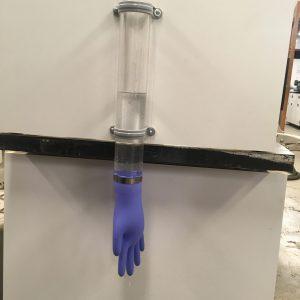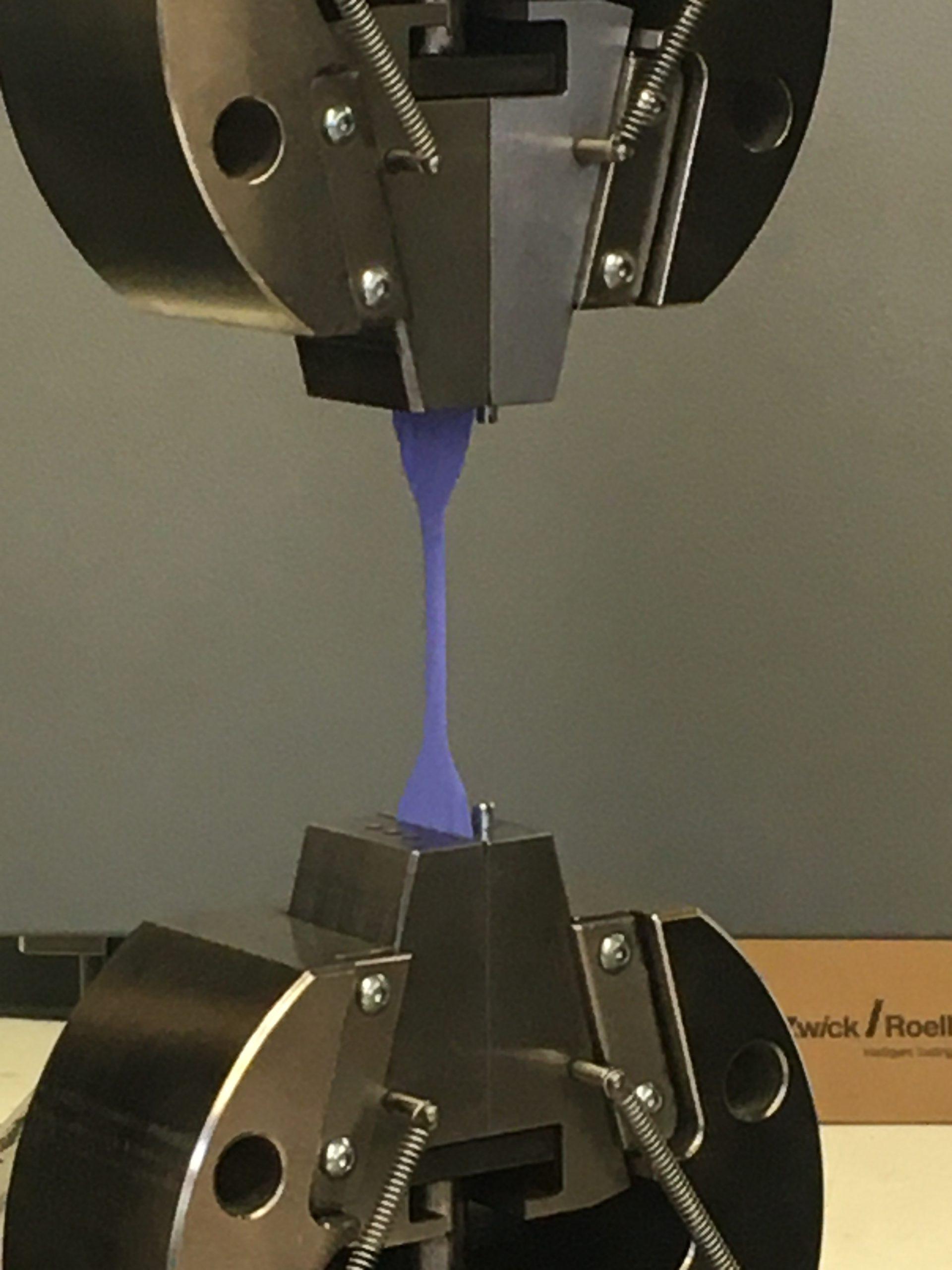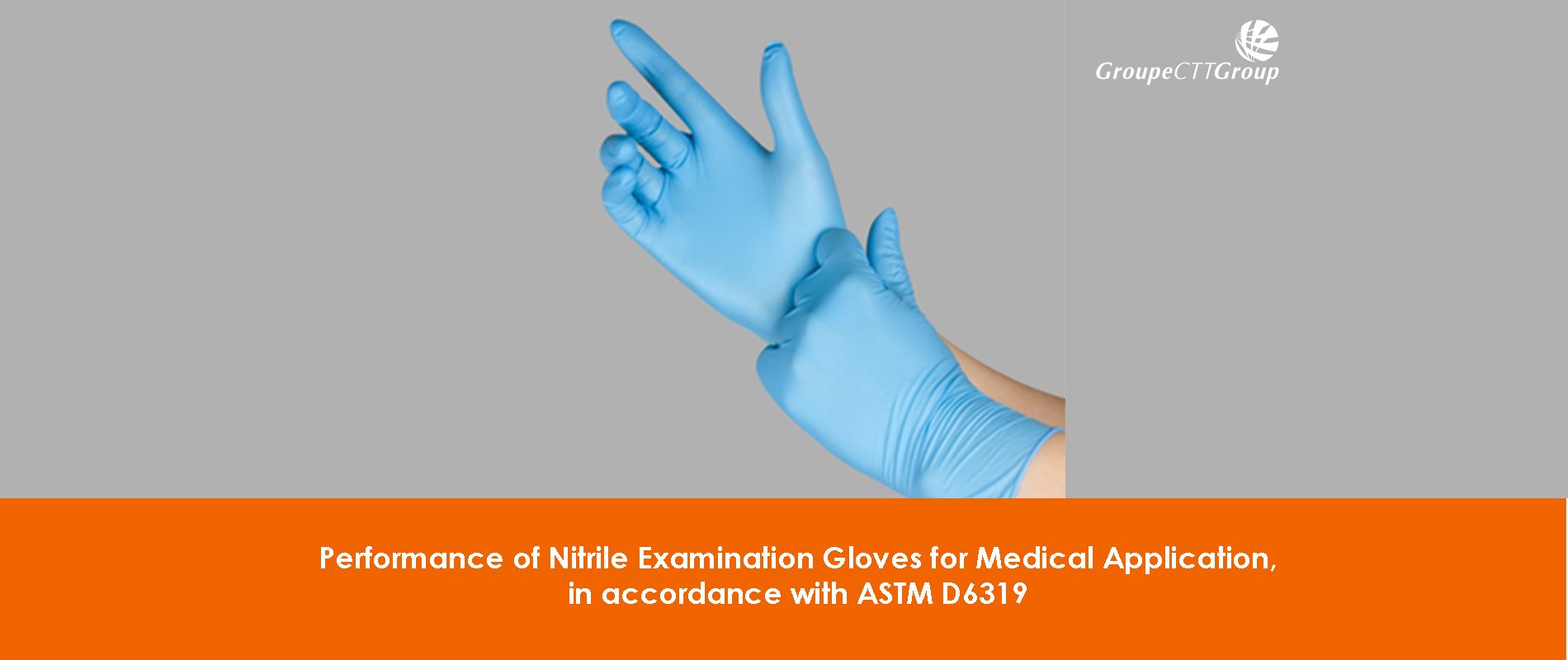This specification is intended as a referee procedure for evaluating the performance and safety of nitrile rubber examination gloves. Requirements are established for nitrile rubber gloves used in conducting medical examinations and diagnostic and therapeutic procedures. Physical material tests and performance tests are covered by the specification.
| Test 1 : ASTM D5151 – Detection of Holes in Medical Gloves
This test consists in submitting a glove to an internal pressure of one liter of water, an evaluating any leakage. This test detects leaking holes which thereby compromise the usefulness of the glove. Adaptation of this test under pressurized conditions is recommended to evaluate smaller holes, down to the size of 21-gauge needles. |
 |
| Test 2 : ASTM D6319 et D3767 – Physical Dimensions of Medical Gloves
Dimensions are determined at specific locations, including glove’s length, its width at the location of the palm, and its thickness. |
|
| Test 3 : ASTM D412 – Tensile Strength and Elongation of Elastomers
This test evaluates the tensile (tension) properties of vulcanized thermoset rubbers and thermoplastic elastomers. Specimens of uniform cross-sectional area are tested under a constant rate of elongation. For medical gloves, dumbbell (type C) specimens are cut in the flat portion from cuff edge to palm, tensile strength, and ultimate elongation are measured; a minimum strength of 14 MPa and a minimum elongation of 500% are required. |
 |
| Test 4 : ASTM D573 – Accelerated Aging of Medical Gloves
Gloves are subjected to an oven aging and tested for tensile strength and elongation, using ASTM D412, after aging. The accelerated aging of medical gloves is 166 hours at 70°C, or otherwise 24 hours at 100°C for specific usage. A minimum residual tensile strength and ultimate elongation is required. Technical note: the observed reduction in tensile elongation is caused by oxidation and thermal aging of elastomers. |
|
| Test 5 : ASTM D6124 – Residual Powder on Medical Gloves
Solid powder content on the surface of medical gloves is determined through repetitive rinsing and filtration of solids from the inside and outside of the gloves. Procedure I and procedure II are adapted to measure the amount of powder per glove or the amount of powder per unit area, respectively. Gloves are assessed as powder-free gloves if the powder content is measured below 2mg per glove. |
In addition to ASTM D6319, tests for nitrile gloves in medical applications are required in Canada and in USA for the following characteristics:
- ASTM F1670: Resistance to penetration by synthetic blood;
- ASTM F1671: Resistance to penetration by blood-borne pathogens;
- ASTM F739: Permeation of Liquids and Gases.
If you need further information about tests and more details please contact us at info@gcttg.com.


